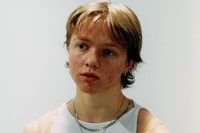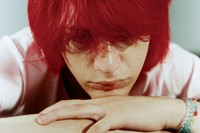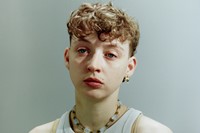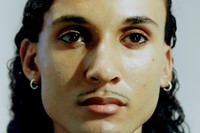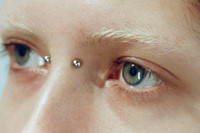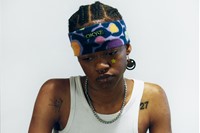“It was more like a dialogue, reacting to how we felt they conveyed themselves”: The photography duo delve into their debut book, which captures 20 young, nonbinary people living in the British capital
A chain straightens against a body in motion; two bridge piercings lightly punctuate a pair of open green eyes; a person’s thigh bears a tattoo of a hot dog, labelled ‘FREUD.’ London-based photography duo Sasakiavins’ debut book, Spring, is a near-wordless work of portraiture, following 20 nonbinary artists through the course of hours-long unstructured sessions. Without context or background detail, the photographs evoke a kind of soft curiosity: who are these people? What have we caught them in the middle of doing? What unseen object is their gaze directed to?
Spring was born out of Sasakiavins’ artistic focus on social categories – “how we think about and organise ideas, people, or things” – and took shape through the duo’s encounters with nonbinary artists, including photographer Santiago Franco Schicke and dancer Naissa Essart Nielsen. “Photography can communicate ideas in a gentle and indirect way,” the duo tell AnOther. “We look to break down the limitations of categorisation that are part of old ‘common sense.’” Nonbinary-ness can be intuitive: the diverse subjects of Spring sit in the interstices of gender, and the photographs prolong our encounters with people who invite a more complicated kind of recognition.
As such, the book welcomes a desire to connect with its subjects, but maintains a private boundary that art about trans people so often seeks to violate. Each portrait evokes the feeling of a small, protected private world. Each subject is individually shot, Sasakiavins notes, in their preferred everyday clothing, and sometimes in the midst of their artistic practice: “For some of the individuals, who were creatives in dance or art, we invited them to perform during the shoots so that we could unveil some of their characteristics through their expressive freedom.” We see them in the midst of a personal artistic process, whose nature we cannot quite uncover or judge.
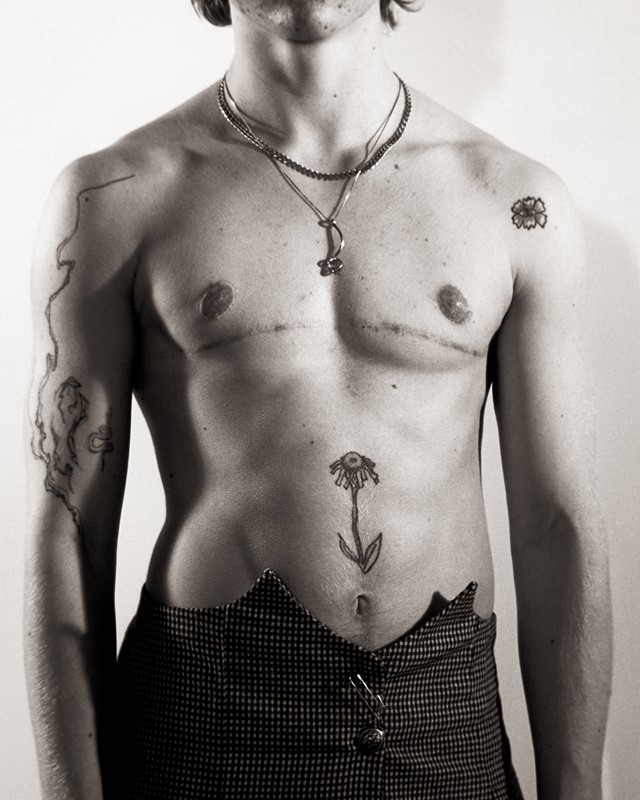
The results often resemble fashion photography, as the subjects’ beautiful, specific style draws the eye – bright, sharply cut fabrics; white tank tops and colourful bandanas; carefully layered jewellery; a scar adjacent to a flower tattoo – but the models themselves are just out of reach. They aren’t cold or impenetrable, though, in the way of the classic fashion model. They are simply somewhere else. Sasakiavins deliberately avoided an anatomising approach, where trans and nonbinary people are displayed to be eaten up by a hungry cis gaze: “It was more like a dialogue,” they say, “reacting to how we felt they conveyed themselves.” The name ‘Spring’ was chosen for its symbolism of “new beginnings, new energy and hope”, and in an embattled time for trans representation, the subjects of Spring feel like they have some control and some ability to rest.
The book is deliberately in conversation with political opposition to trans and nonbinary rights: “We hope Spring can contribute a positive impact through its focus on showcasing these identities, particularly in the face of growing political opposition … We work in search of a new way of thinking.” Framed against their pearl-grey backgrounds, Spring’s subjects invite new and better methods of thinking about the world: to pay real attention to its subjects, it suggests, means accepting that invitation.
Spring by Sasakiavins is self-published, and is out now.

